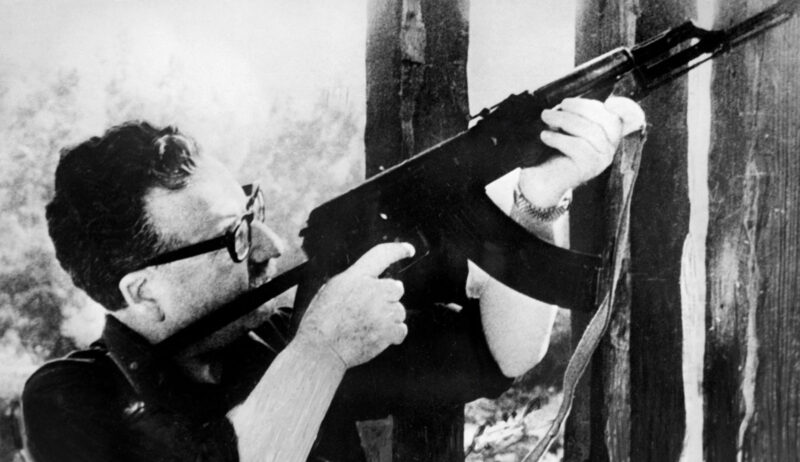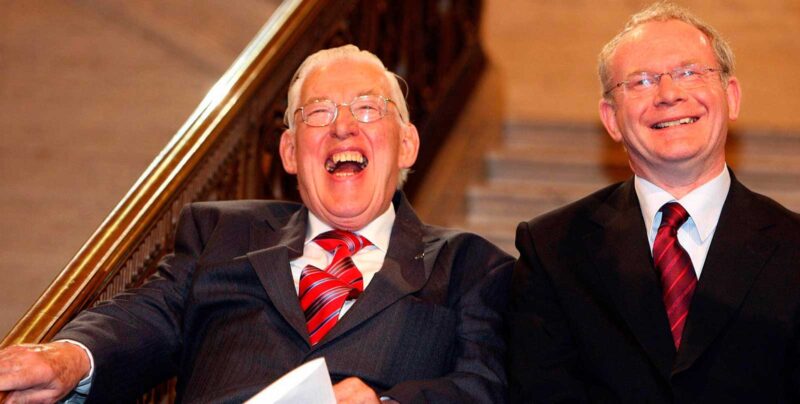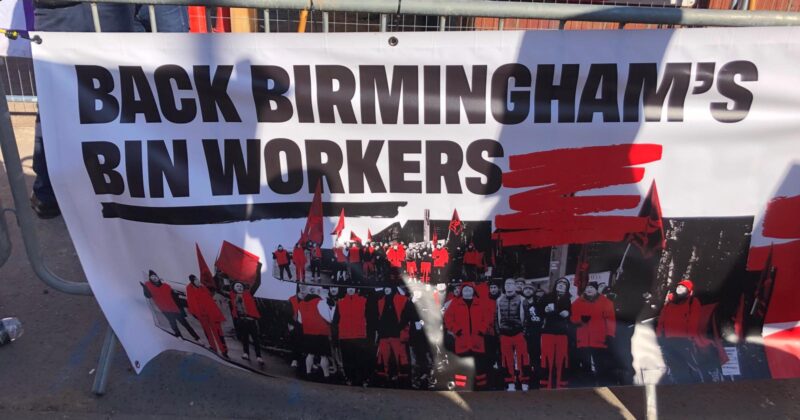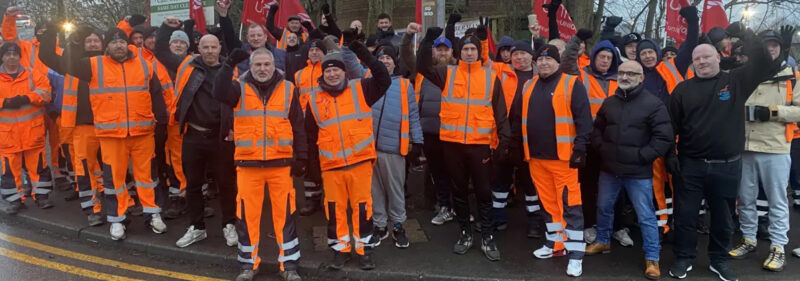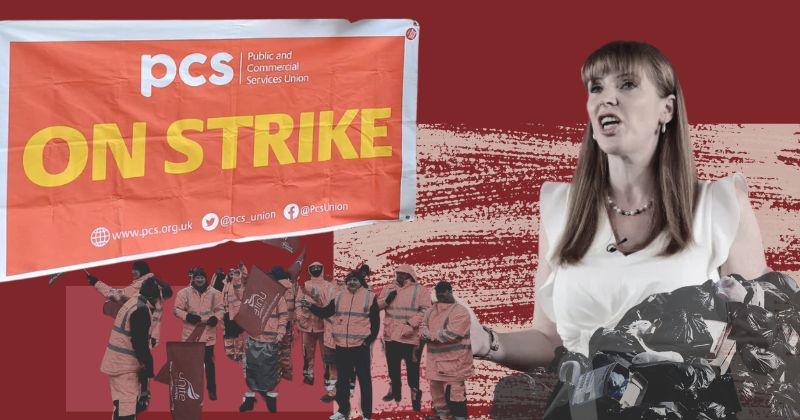The British General Strike of 1926 – Part Two
 In Workers Power 367 we saw how the Communist Part of Great Britain (CPGB) initiated the powerful rank and file Minority Movement, but became ever more uncritical supporters of the union leaders when the British TUC formed the Anglo-Russian committee with the Russian trade unions. Dave Stockton looks at what this meant for the 1926 General Strike
In Workers Power 367 we saw how the Communist Part of Great Britain (CPGB) initiated the powerful rank and file Minority Movement, but became ever more uncritical supporters of the union leaders when the British TUC formed the Anglo-Russian committee with the Russian trade unions. Dave Stockton looks at what this meant for the 1926 General Strike
Part 1 of this article can be read here
The rise of a left wing on the Trades Union Congress (TUC) General Council, including Alf Purcell, Alonzo Swales and George Hicks, convinced the CPGB that their influence was growing by leaps and bounds, despite their small size.
In January 1926, the Party adopted the slogan “All Power to the General Council”. Unlike its earlier slogan of “more power to the General Council”, its meaning was not limited to proposing that the individual unions cede their power to direct struggles. By mimicking the Bolsheviks’ 1917 slogan “All Power to the Soviets”, it even suggested the General Council was the leading instrument of a struggle for state power.
The government’s subsidy to the mine owners was due to end on 30 April. The TUC basked in their “Red Friday” victory for six months while the government prepared a strikebreaking outfit, the Organisation for the Maintenance of Supplies (OMS), which now had several hundred thousand volunteers and special constables.
At the end of January 1926, the General Council finally appointed a nine person Special Industrial Committee to liaise with the miners. It consisted of right-wingers James Henry Thomas, Arthur Pugh and Alexander Walkden, centre-right figures Arthur Hayday, Walter Citrine and Walker, and left-wingers Ben Tillett, John Bromley, and George Hicks. Increasingly dominated by the right wing, this committee would play a crucial role.
At its first monthly meeting on 26 February, the General Council resolved to “stand firmly and unitedly against any attempt further to degrade the standard of life in the coalfields”, calling for “no reduction in wages, no increase in working hours and no interference with the principle of National Agreements.”
This was a victory for the left, supported by the centre around TGWU leader Ernest Bevin. Meanwhile, Arthur James Cook continued giving fiery speeches at miners’ rallies across the country, popularising the slogan “Not a minute on the day; not a penny off the pay”.
The Samuel Commission, set up as a diversion after “Red Friday” by prime minister Stanley Baldwin, issued its report on 10 March. It recommended wage cuts, or “a temporary sacrifice by the men in the industry”, when the government subsidy came to an end.
Labour leader Ramsay MacDonald immediately welcomed Samuel’s report as “a conspicuous landmark in the history of political thought”, while Thomas said that it was 70 per cent in favour of the miners, and should form the basis for negotiations.
Cook, however, totally rejected any wage cuts, while the TUC lefts ominously failed to endorse the miners’ rejection of the Samuel report. This was an early signal that they would cede leadership to Thomas and the right wing, just as Leon Trotsky had predicted.
In sharp contrast, the CPGB declared Samuel’s report “a declaration of war against the miners and the whole working class movement.” As if to confirm this, the mine-owners published new terms of employment to begin on 1 May, which added an hour on the day, reduced wages by up to 25 per cent, and replaced national wage agreements with district level ones.
The Minority Movement declines to lead
In response, the Minority Movement called a National Conference of Action on 21 March 1926. Its 883 delegates (including representatives of 52 Trades Councils) claimed to represent 957,000 workers, making it the largest conference in its history.
Tom Mann made a militant speech in solidarity with the miners, and people discussed transforming the Trades Councils into real Councils of Action, by bringing in political organisations, cooperative societies and the Unemployed Workers’ Movement.
Dozens of such Councils of Action had already been formed in areas where Communists and the Minority Movement were strong, like the Fife coalfield in Scotland. Mann also emphasised the need for defence organisations to protect strikers against the inevitable repression of the police, the OMS and the small but violent National Fascisti movement.
Although the CPGB had presented the General Council as the “general staff of the movement”, there was little debate or discussion on what was to be expected of it, or of the lefts. This failure was a fatal weakness in the CPGB’s strategy.
Only on 27 April – three days from the mine owners’ deadline – did the General Council commission a plan for solidarity action. However, it did summon the executives of its 141 affiliated unions to a special conference in London. These 828 delegates assembled on Thursday 29 April in Farringdon’s Memorial Hall, and met daily until 3 May to hear reports of the negotiations.
In a speech to the assembled union executives, Ernest Bevin leader TGWU stressed the radical nature of what the movement was doing:
“You are moving to an extraordinary position. In 24 hours from now you may have to cease being separate unions, for this purpose you will become one union with no autonomy. The miners will have to throw in their lot and cause and the general movement will have to take the responsibility of seeing it through.”
Bevin was right. The situation did indeed require that the union executives act for the movement as a whole, indeed as leaders of the working class. What he and they refused to recognise was that a general strike was intrinsically a political struggle, a struggle with the state.
For this, however, they were totally unprepared. The TUC did not wish to force the government to submit, but to pressure it to arbitrate more favourably to the miners with the employers. It remained, left-wingers included, a collection of union officials looking for a deal.
They were faced with the executive of a ruling class of a very different temper. Baldwin himself was inclined to delay, but he was surrounded by a group of hard-nosed class warriors – Winston Churchill, William Joynson-Hicks and Lord Birkenhead. They were not looking for a compromise but for victory, and were determined to smash the unions’ resistance and make industry profitable again, even if this meant facing a general strike.
The right wing union leaders were more aware of this than the lefts, and drew completely defeatist conclusions from it. Thomas revealed his thinking to the TUC’s new acting secretary, Walter Citrine:
“I am perfectly convinced Walter there is no hope. Stanley Baldwin talks to me just like a pal. There is going to be trouble and there is no way out of it. […] They are going to smash it. It won’t last more than a few days. […] You see Walter they have made up their mind they must fight. Who is this strike against? It is not against the coal owners. The money is not in the industry so it must be against the state. Well, Baldwin states the state must be supreme, and he is right.”
Their dilemma was that neither the Cabinet nor the coal owners would offer a compromise that the TUC could sell to the miners’ leaders. Neither an immediate sell-out nor a government retreat was possible. A general strike was absolutely inevitable.
What was not inevitable was its defeat – or its victory. These were determined by the actions, strategy and tactics of its leaders, not just of the General Council, but also of any alternative leadership – the CPGB, the Minority Movement and the hundreds of thousands of militants in the Trades Councils.
At precisely this point, however, the CPGB failed even more dramatically by renouncing any revolutionary perspective for the strike. In the last issue of the Workers Weekly before the strike, in an article entitled “Fighting for life – Revolution not in sight” J T Murphy put it like this:
“Our party does not hold the leading positions in the trades unions. It is not conducting the negotiations with the employers and the government. It can only advise and place its forces at the service of the workers – led by others. And let it be remembered that those who are leading have not revolutionary perspectives before them. […] To entertain any exaggerated views as to the revolutionary possibilities of this crisis and visions of new leaders ‘arising spontaneously in the struggle’ etc is fantastic.”
And what of Purcell, Swales and Hicks? They were now ready to let Thomas take responsibility, as Trotsky had predicted in his pamphlet Where Is Britain Going? This was because the only alternative to surrender was an all-out indefinite general strike, facing inevitable legal and police-military repression.
Even the miners’ leader Cook was utterly unprepared for that, and began to look for a way out. In the Daily Herald of 27 April he wrote, “I am convinced that a settlement can be reached by a straight return to the [Samuel] Commission’s proposals”.
The government, however, insisted on an explicit commitment from the miners to accept wage reductions, and refused to put any pressure on the mine owners, either to withdraw their lockout notices or to provide any further government money. In short, Baldwin called the TUC’s bluff.
Negotiations fail
The General Council turned its Special Industrial Committee into a Negotiating Committee under Thomas’s leadership, engaging in shuttle diplomacy between TUC headquarters and 10 Downing Street.
Meanwhile, the day of the lockout came and one million miners found themselves out of work. Huge May Day marches, all supporting the call for a general strike, demonstrated the mass enthusiasm for it. The central London May Day demonstration marched past the Memorial Hall in Farringdon Street, and one union executive member recalled, “I never heard the Red Flag sung so loudly and with such spirit”
Inside the executives were, quite literally, singing from a different hymn sheet, to Cardinal Newman’s Lead Kindly Light. Its words “amidst the encircling gloom, lead thou me on, the night is dark, and I am far from home” rather aptly expressed the mood of a trade union bureaucracy faced with a mass struggle.
Thomas, addressing the conference, uttered words that were to become infamous:
“I suppose my usual critics will say that Thomas was almost grovelling, and it is true. In all my long experience – and I have conducted many negotiations – I have never begged and pleaded like I begged and pleaded all day today. […] For ten days we said to the government ‘you force the coal owners to give us some terms, never mind what they are and however bad they are. Let us have something to go on’. They said, ‘No, it cannot be done’.”
With no alternative but to honour their pledge, the conference voted overwhelmingly for the General Council’s motion for an industrial stoppage in defence of miners’ wages and hours, to begin at midnight on Monday 3 May.
Although negotiations continued on 1 May, a sell out was already under way, brokered by Thomas. He and the Negotiating Committee believed an agreement was within reach on the basis of the Samuel Report, by conceding pay cuts for the miners. Thomas even drafted a memorandum with Lord Birkenhead that accepted wage cuts. But the miners’ executive continued to dissent, and Cabinet die-hards also jibbed.
When printers at the Daily Mail declared an unofficial strike to prevent the publication of a provocative anti-union editorial, the Cabinet feigned outrage and broke off negotiations. With his sell-out cruelly snatched from under his nose, Thomas left Downing Street in despair. As he said later, “I gave way to tears. It was like seeing the fabric you loved smashed to fragments.”
The TUC leaders cravenly repudiated the Daily Mail strikers and dispatched Pugh and Citrine back to Downing Street. When they got there, the doorman curtly informed them that the prime minister had gone to bed and could not be disturbed. The strike was on, but ever with so unwilling a leadership.
The Strike is on
Between 1.5 and 1.75 million workers solidly obeyed their unions’ instructions to strike, as well as a million locked out miners. This figure was to rise to 3.6 million workers by the end of the strike. Under Bevin’s bureaucratic plan, the majority of workers had been instructed not to strike, and many who did were ordered to return.
In London, the main groups called out were the dockers, printers, power station workers, railwaymen, and transport workers. Henry Hamilton Fyfe (editor of the British Worker, the TUC’s strike paper) recorded the first day in his diary:
“On the railways scarcely a wheel turns… Docks everywhere are empty and silent. The roads, outside of the cities, have little traffic on them. Building has almost entirely stopped, except on housing schemes and hospital extensions. Iron and steel works are closed; so are the heavy chemical factories. There are none of the ordinary newspapers. Nothing like a strike on this scale has been seen before – anywhere.”
On the second day, the Liverpool Council of Action, founded ten months before, reported that all engineers and shipyard workers on the Mersey were out. In Birkenhead and Wallasey, a group of strikers attacked the trams and brought them to a halt. The strike was solid, and it remained so throughout the nine days. In no sense could it be said that it failed due to the rank and file. Its main organisers were not the Eccleston Square bureaucrats, but the local Trades Councils and the Councils of Action.
The Government immediately proclaimed a state of emergency, giving itself enormous powers. It deployed the OMS and 226,000 special constables. The middle-class OMS volunteers were able to get a few buses running, but failed completely when it came to trains; it obviously takes time to learn to drive a steam locomotive.
Scab buses and trams were waylaid by mass pickets and set on fire. There were fierce battles between police and strikers in many cities, especially around the London docks. The picture of strikers and police playing football, an image encouraged by the TUC, is a false one. But then the TUC’s message had been to keep calm, that is, to stay passive.
The Councils of Action, however, had other ideas. In Fife coalfield, a CPGB and Minority Movement stronghold, defence guards massively increased their numbers after a clash between pickets and police, and patrolled the streets in military formation, armed with pick axe handles. Police provocations stopped, and a situation approaching dual power ensued. Similar conditions emerged in the North East and in the Welsh mining valleys.
The government commandeered all available newsprint and published a newspaper, The British Gazette, with Churchill as its editor. The TUC responded by printing the British Worker on the Daily Herald presses. Police raided it and continually harassed its distribution. Churchill confiscated some of its newsprint reserves. The Cabinet, however, decided not to take direct control of the BBC, as it was already loyally toeing the government line.
The Betrayal
Despite the solidity of the strike, the Negotiating Committee never stopped looking for a way to end it at the miners’ expense. Here, Sir Herbert Samuel returned to action. The TUC met him, behind the miners’ backs, and agreed to his drafting a memorandum that included a reduction in wages. The committee accepted these terms, with the left Alonzo Swales fully concurring. The miners once more rejected them. This was then taken as an excuse by the TUC to call off the general strike.
A TUC delegation consisting of Bevin, Pugh, Thomas and Citrine, was sent to Downing Street. They announced that the general strike was over, provided that the Samuel Commission proposals were negotiated on, and provided that the Government promised there would be no victimisation of strikers. Baldwin bluntly rejected any such conditions, and bullied them into an unconditional surrender.
Lord Birkenhead later wrote that their collapse was “so humiliating that some instinctive breeding made one unwilling even to look at them.” Ernest Bevin, truthfully for once, said on exiting Number Ten that “we will never be forgiven for this day’s work”.
The British Worker’s last strike edition ran the deceitful headline, “Strike Terminated Today – Trades Union Congress General Council Satisfied That Miners Will Now Get a Fair Deal”. The Hull strike committee’s bulletin more truthfully reported: “Alarm – Fear – Despair – a victorious army disarmed and handed over to its enemies”.
In fact, on Thursday, 13 May, there were 100,000 more on strike than on any previous day. The employers immediately began to victimise strikers and workers were forced to resume the strike on 14 May. On 20 May, a miners’ delegate conference once more rejected Baldwin’s proposals and the lockout continued till November when, with its funds exhausted and an uncoordinated return to work underway, the Miners’ Federation of Great Britain finally accepted the harsh conditions. Many militants were victimised and remained unemployed for years.
The Aftermath
There can be no doubt as to the courage and determination of the CPGB. Its members were the heart and soul of the Councils of Action for which they had fought for nearly a year. Of the 5,000 workers arrested throughout the strike, 1,200 were Communists.
Their problem was the political line of their party. Its immediate reaction to the calling off of the strike by the General Council, a decision supported by both left and right, was one of total shock.
Nor did they learn from their mistakes. A CPGB Executive Committee statement in Workers Weekly on 4 June observed:
“There will be a reaction without our party against working with left wing leaders. We must fight down this natural feeling, and get better contact with these leaders and more mass pressure on them.”
The task that the Communist Party faced was to develop a strategy for victory in the general strike, and to fight for it openly. This meant more than Councils of Action, workers’ defence guards and so on, as vital as these were.
It meant placing demands on the TUC leaders and on the lefts to explicitly rule out a surrender of the miners’ demands. It meant winning the Councils of Action to a clear recognition that the strike was a political strike against the bosses’ government, a “challenge to the constitution” as Baldwin (correctly) claimed it to be, and not a trades dispute as the TUC pathetically asserted.
It is impossible, as Trotsky said, to suspend the functioning, not only of the economy but also of the state itself, without the strike raising the question “who shall be the master in the house?” It meant recognising the revolutionary potential that is always present in an all-out general strike.
It also required giving the clearest possible warning of the inevitable treachery of the TUC right wing and the inevitable unreliability of the centre and the left. It meant popularising proposals to control the leaders, to call them to account and, above all, to take the initiative the moment they wavered or tried to retreat or surrender.
This would have meant the Minority Movement clearly posing itself from the beginning as an alternative leadership for the strike, and the CPGB as the political alternative to MacDonald and the Labour Party. This, the CPGB and the Minority Movement utterly failed to do.

